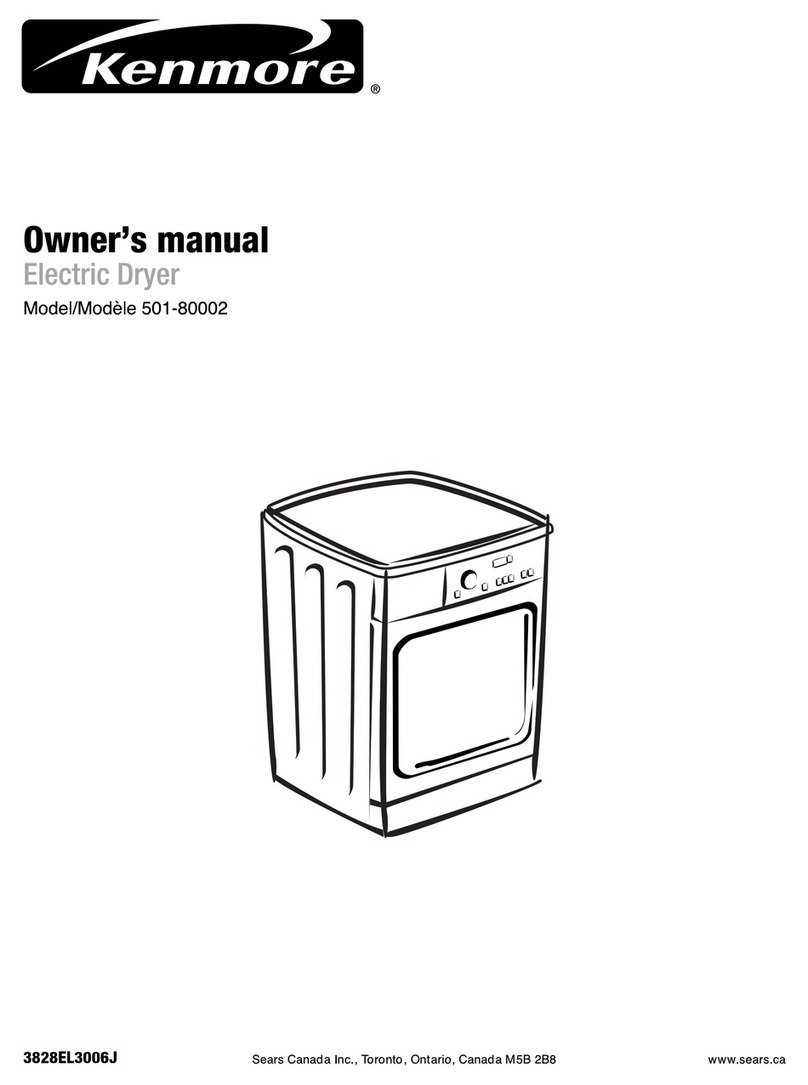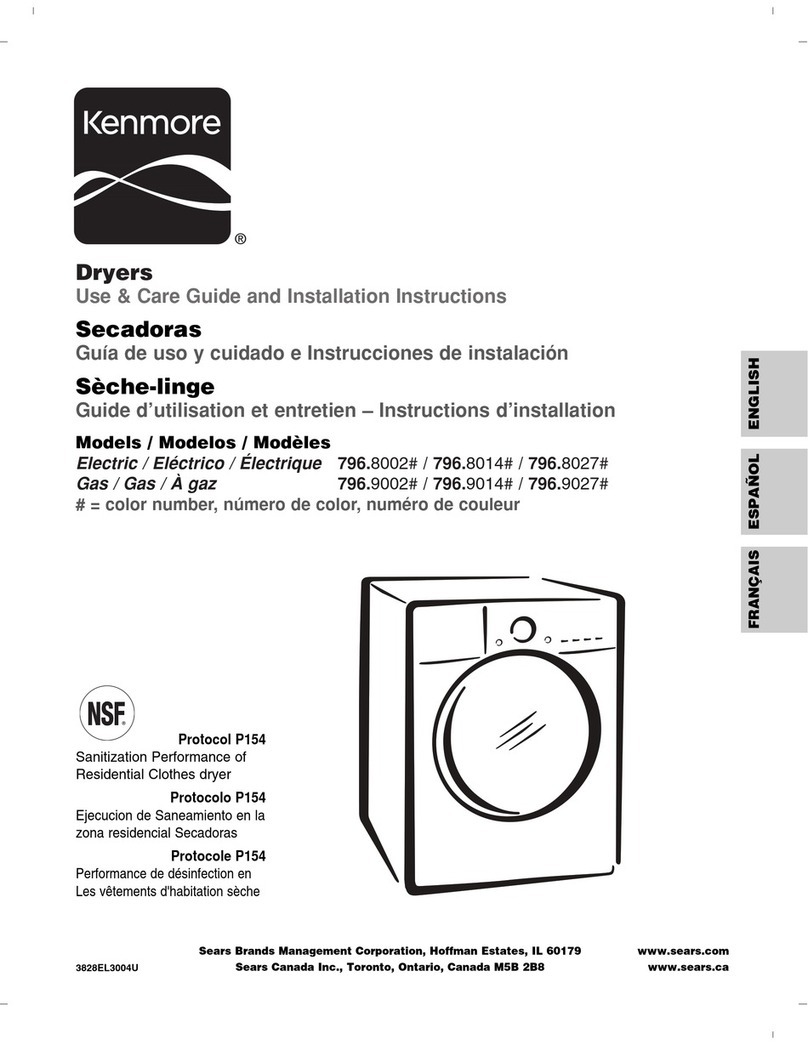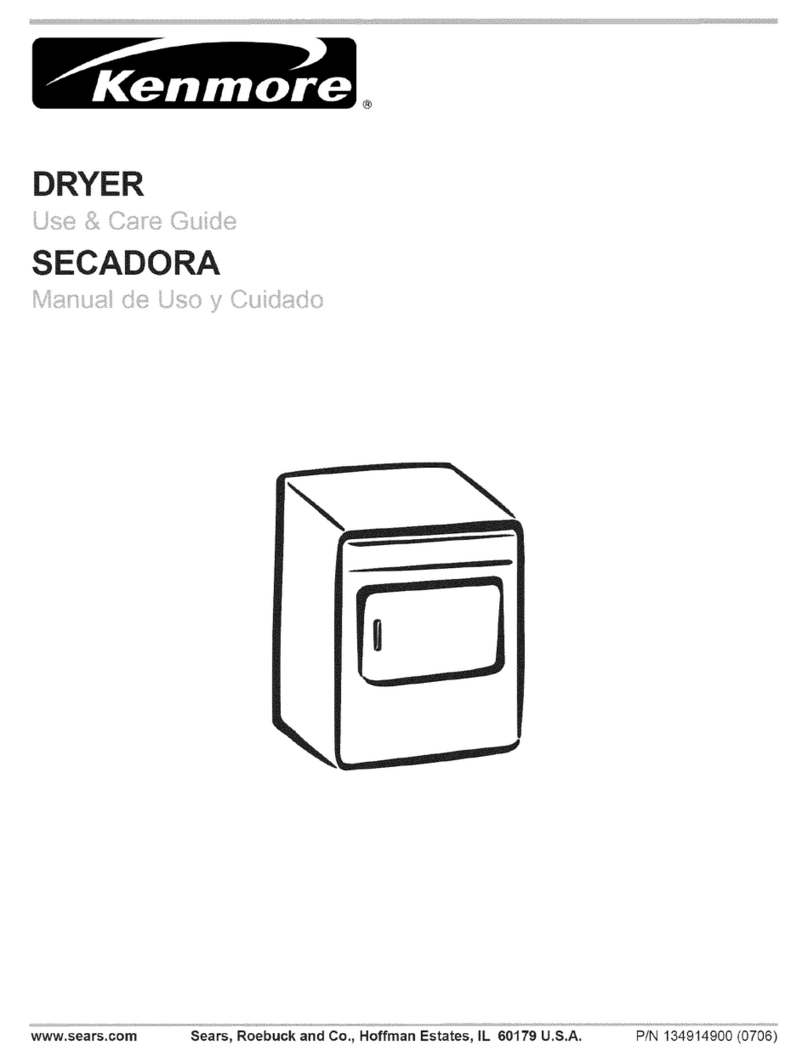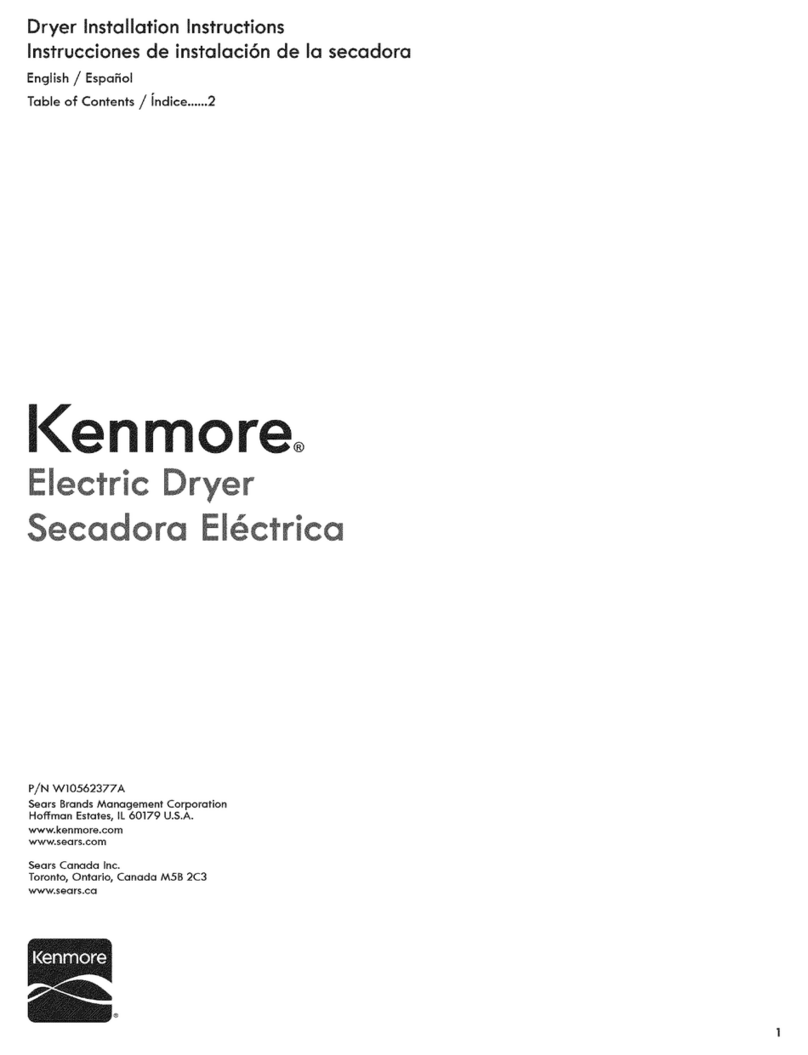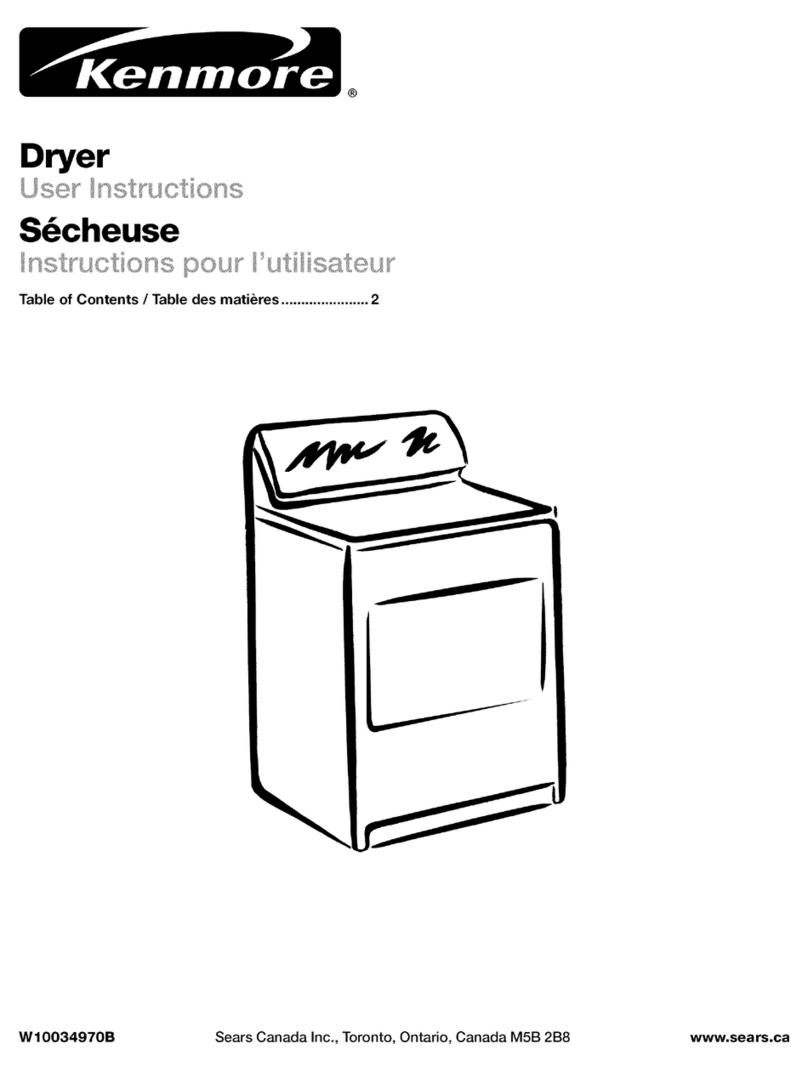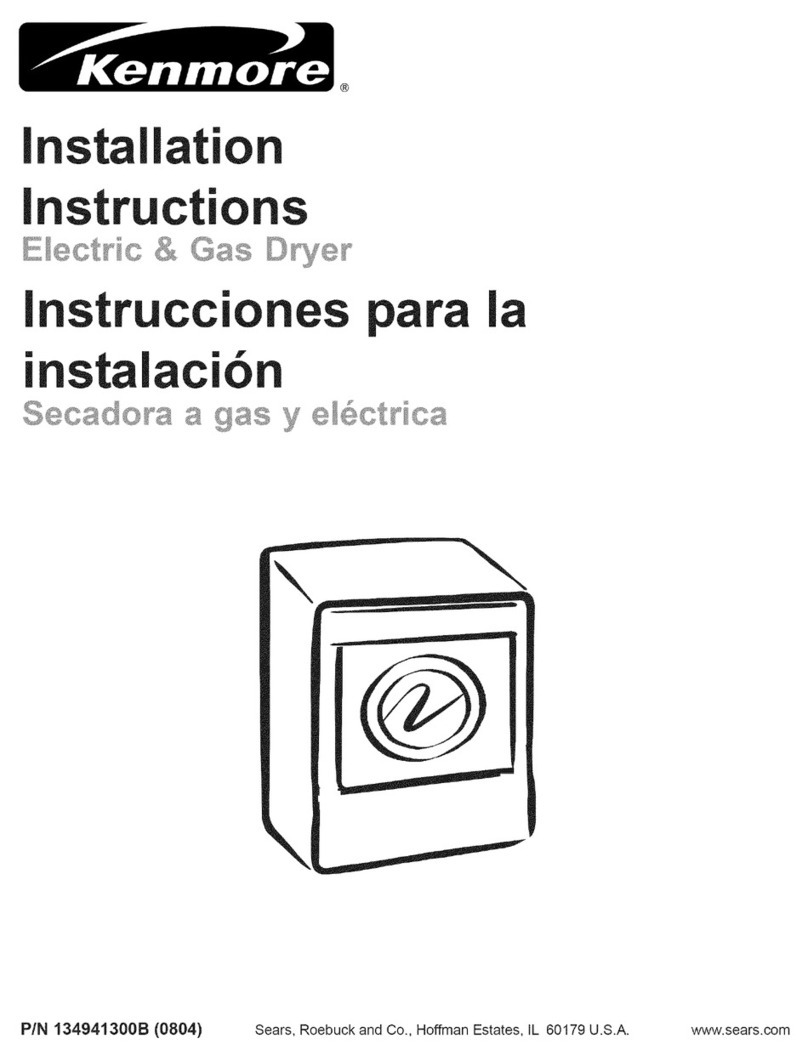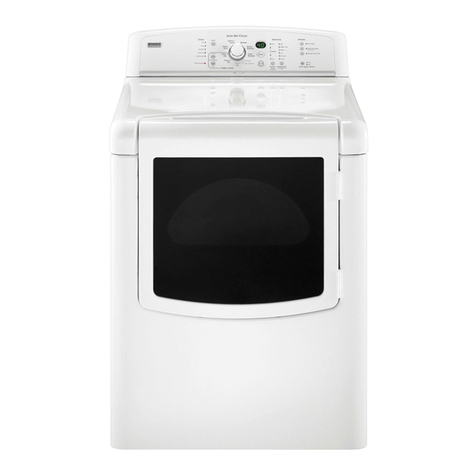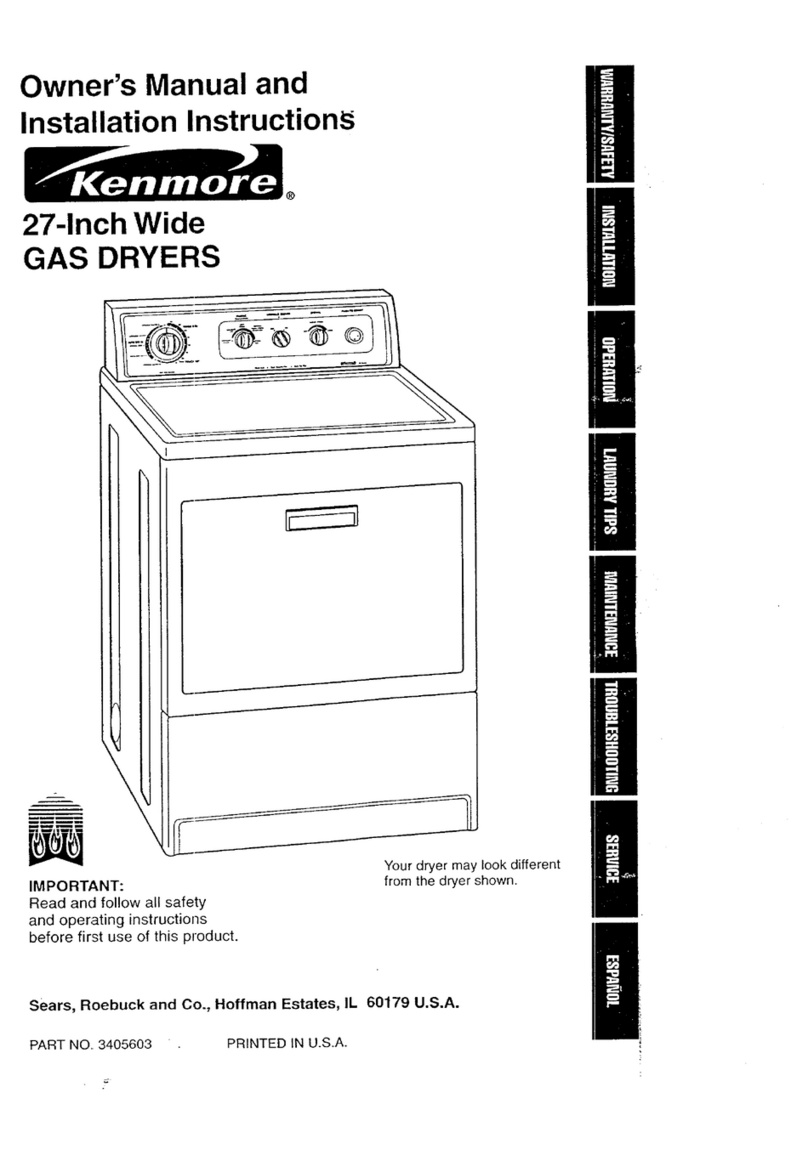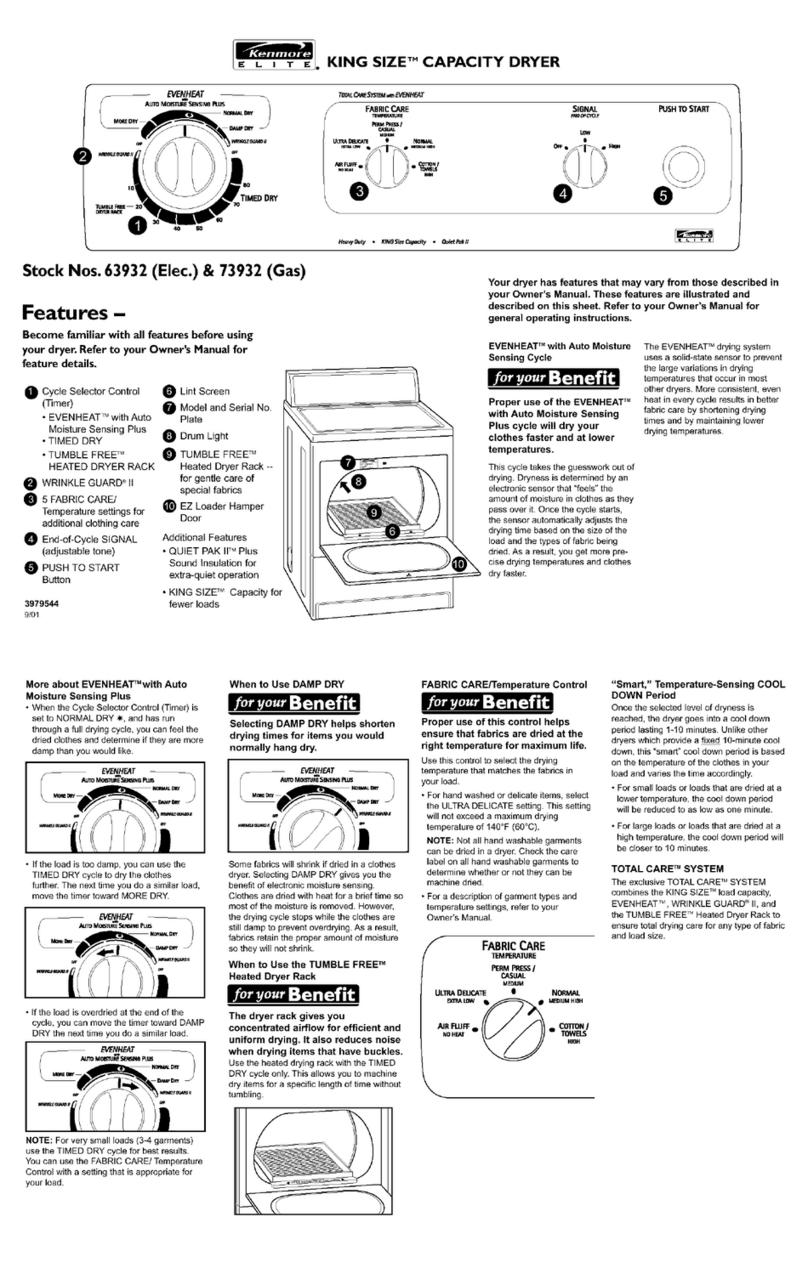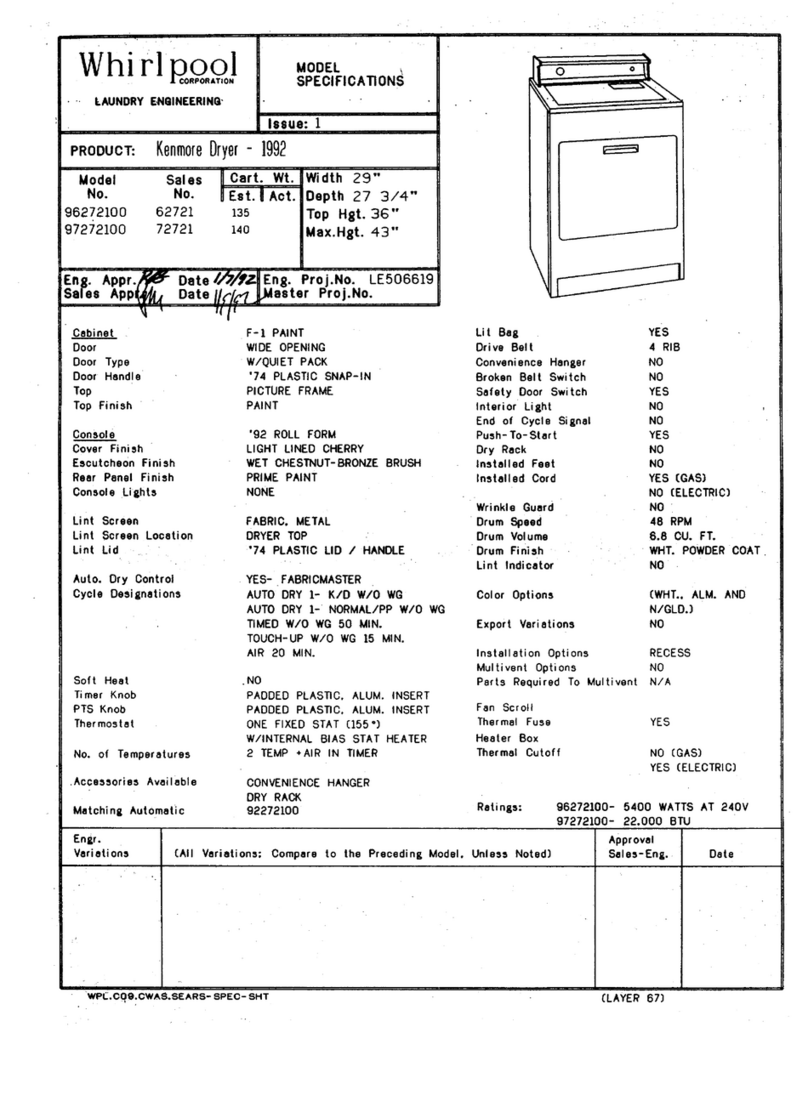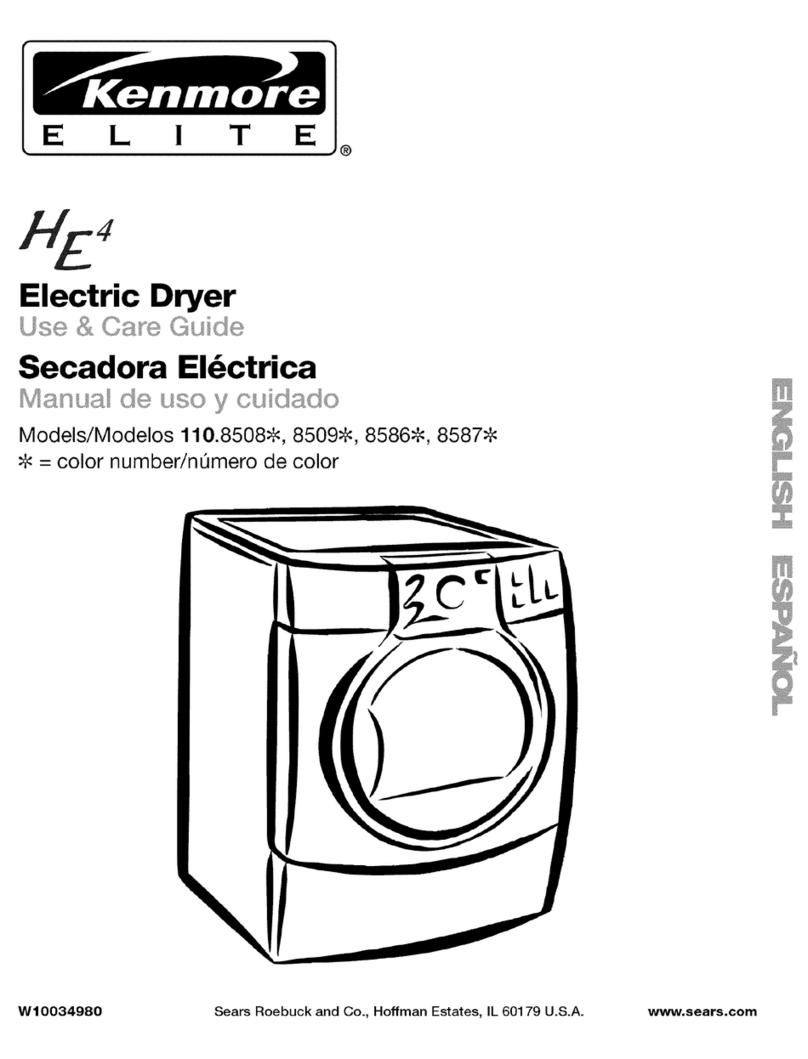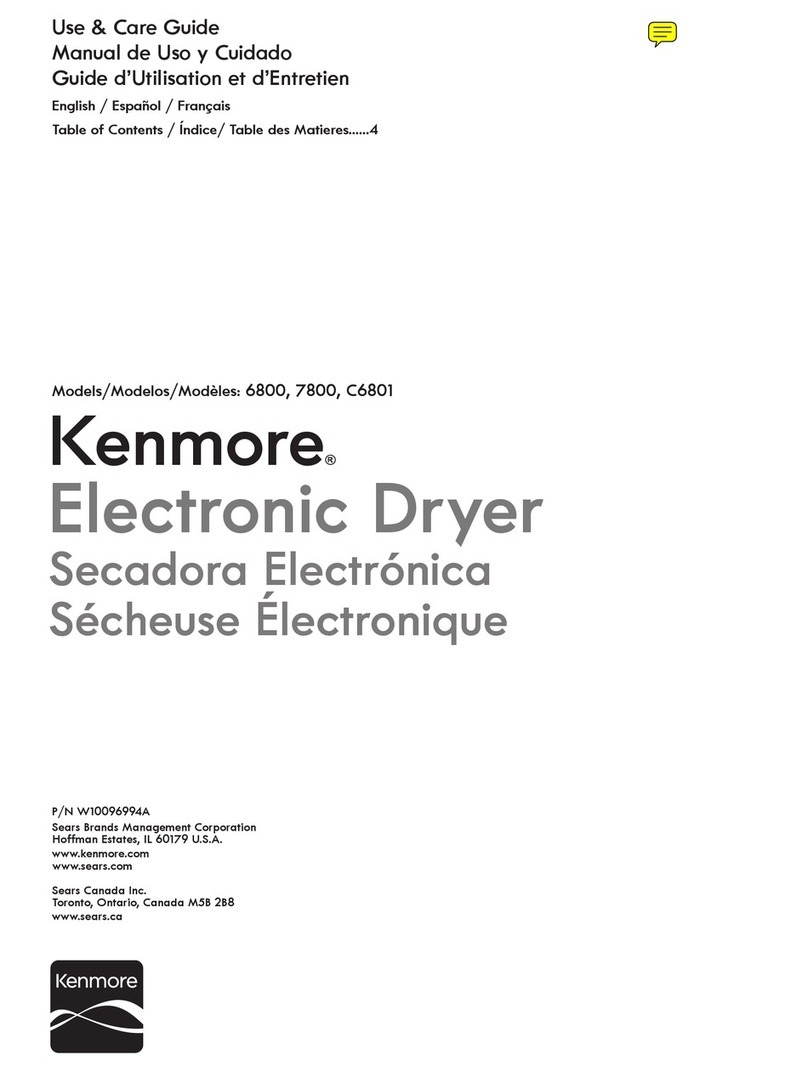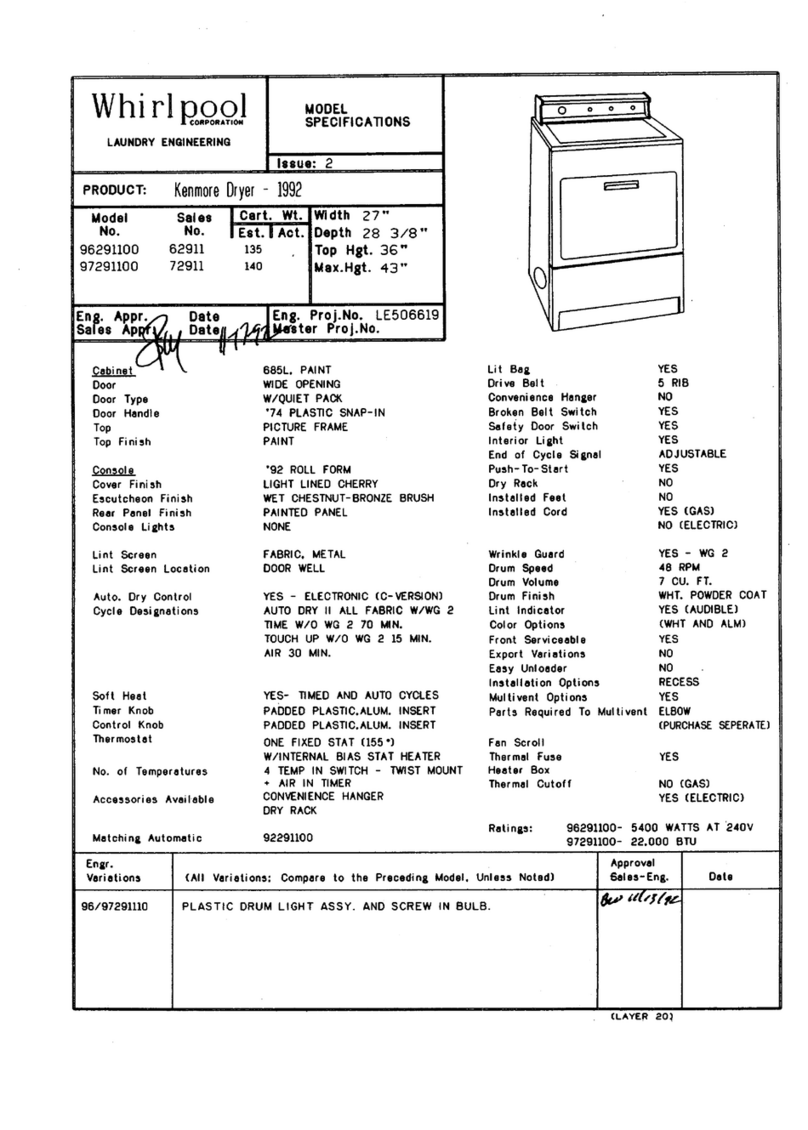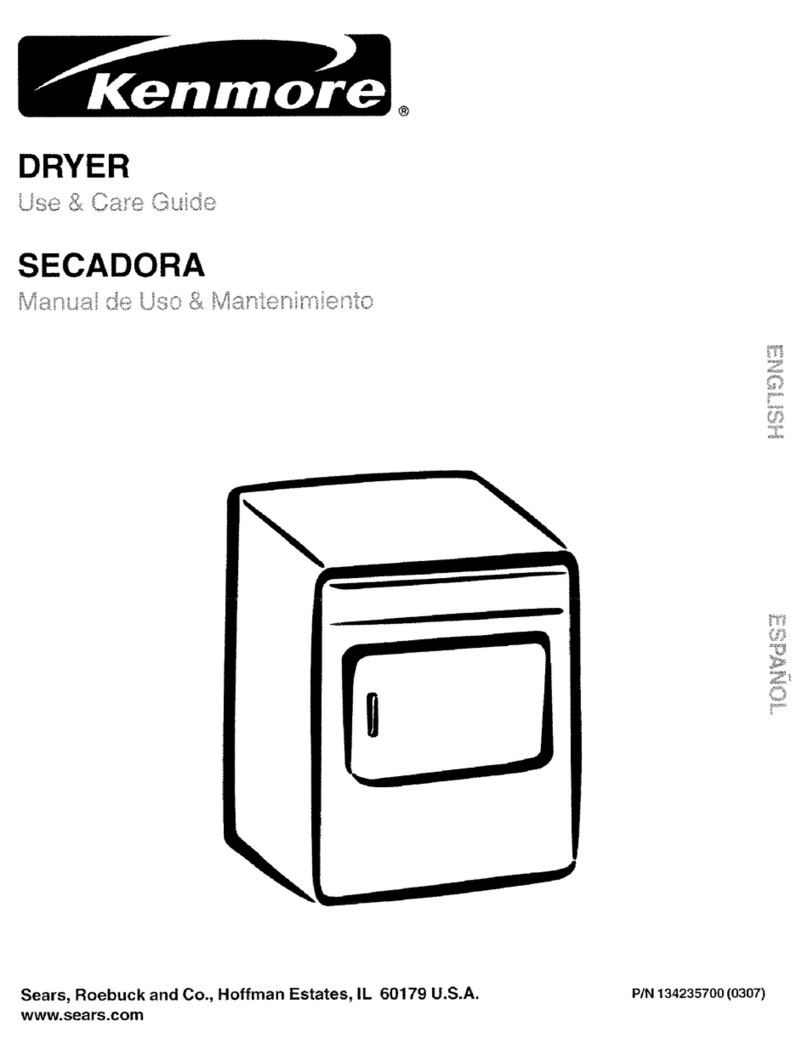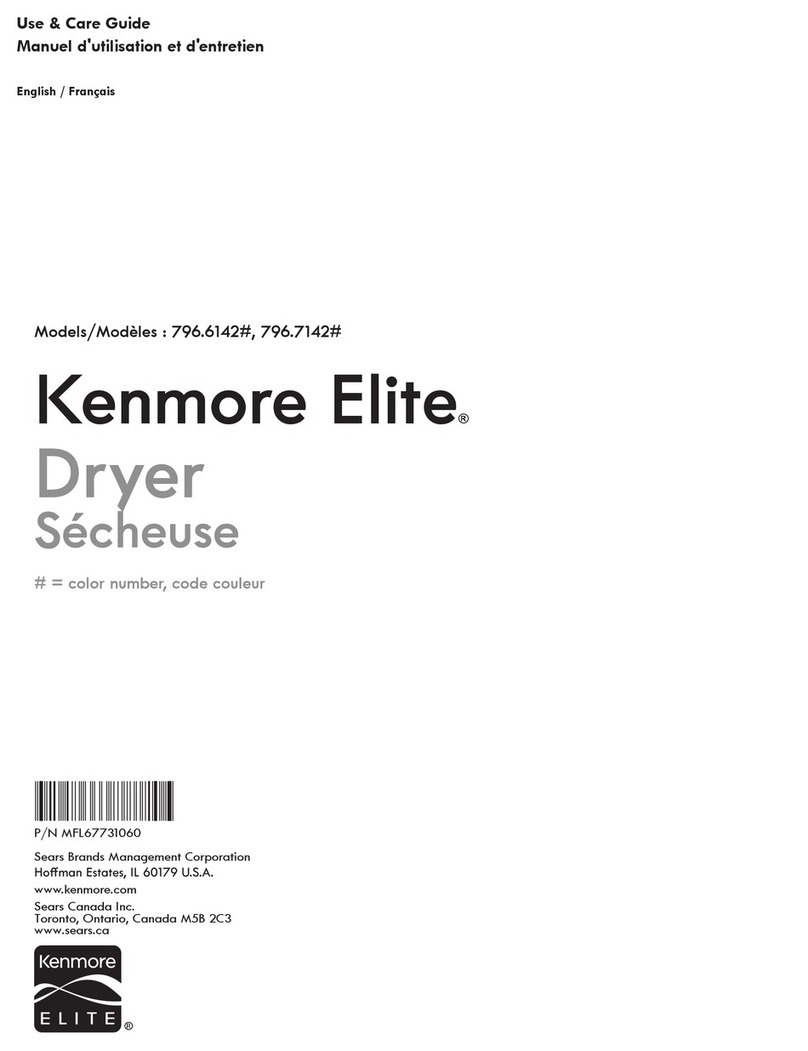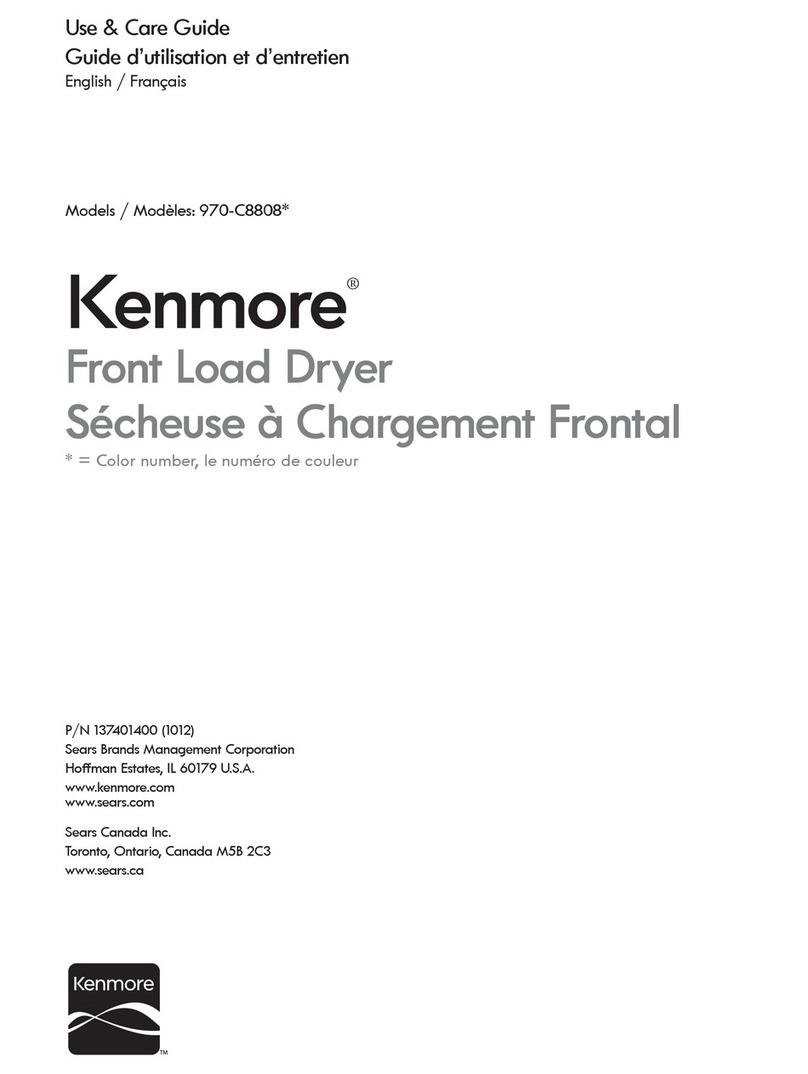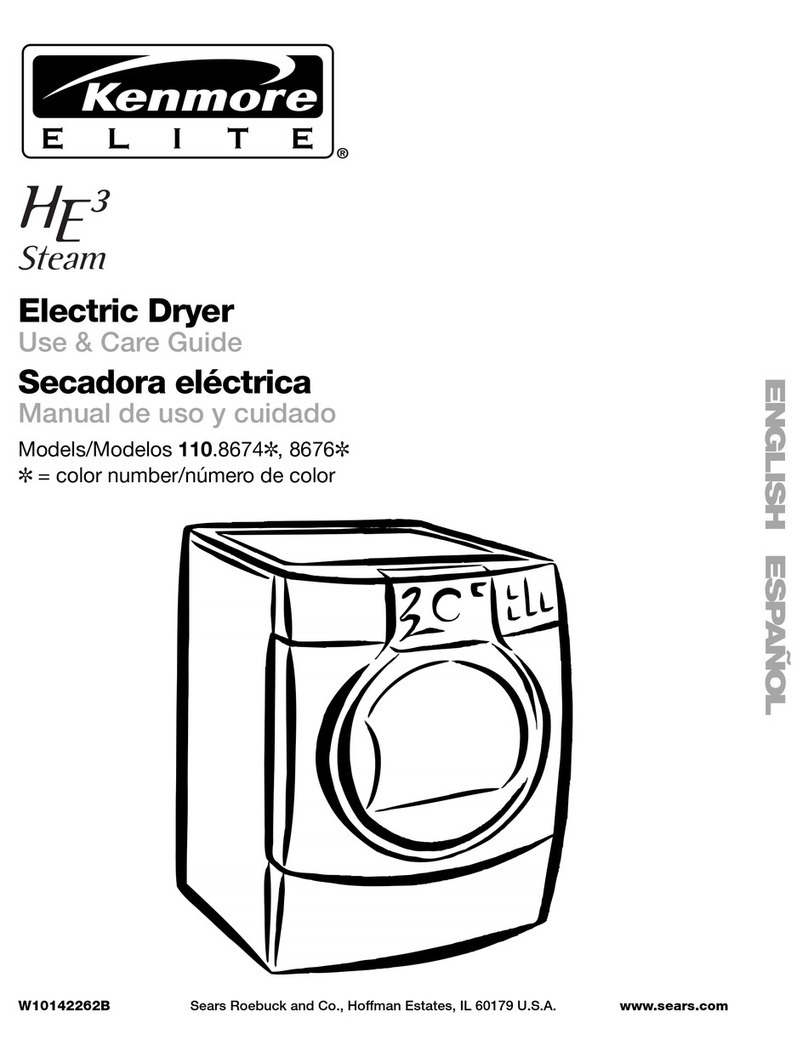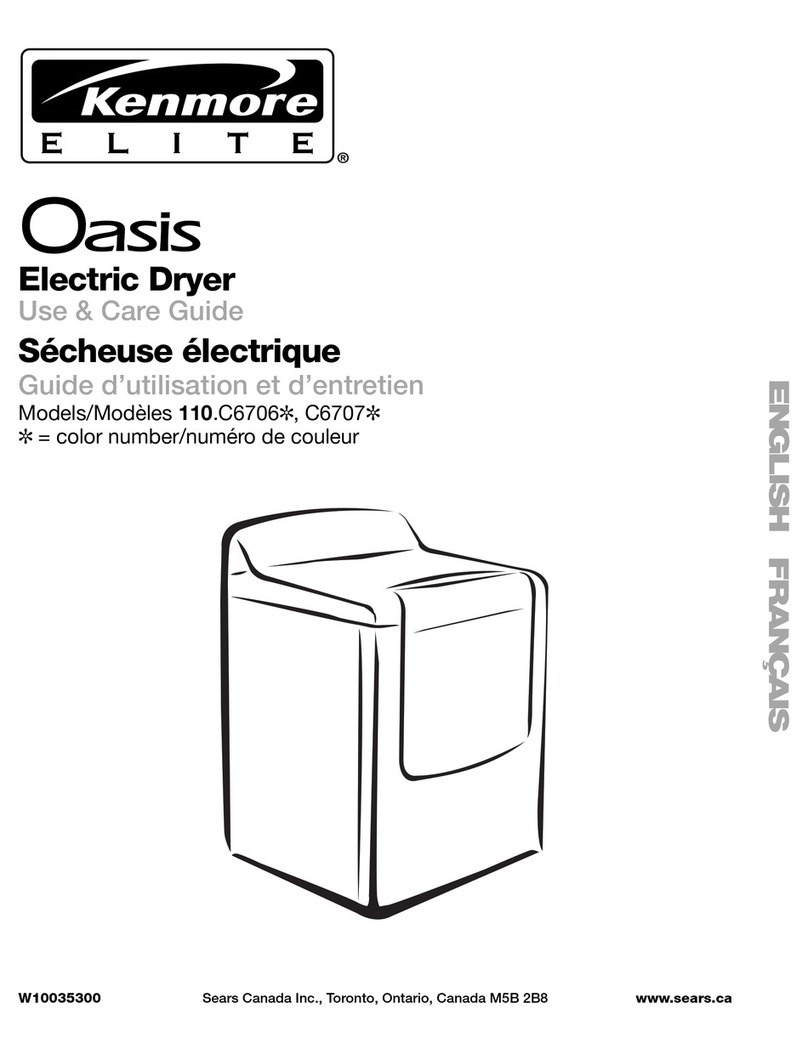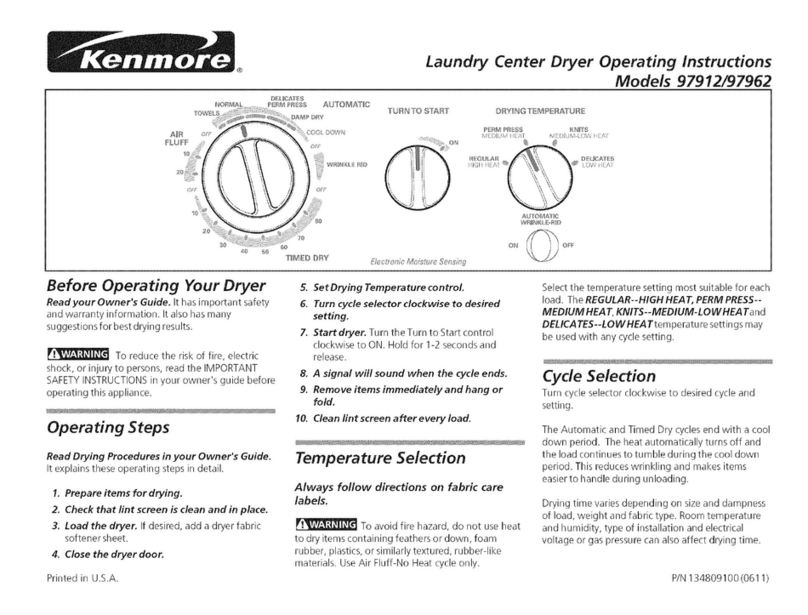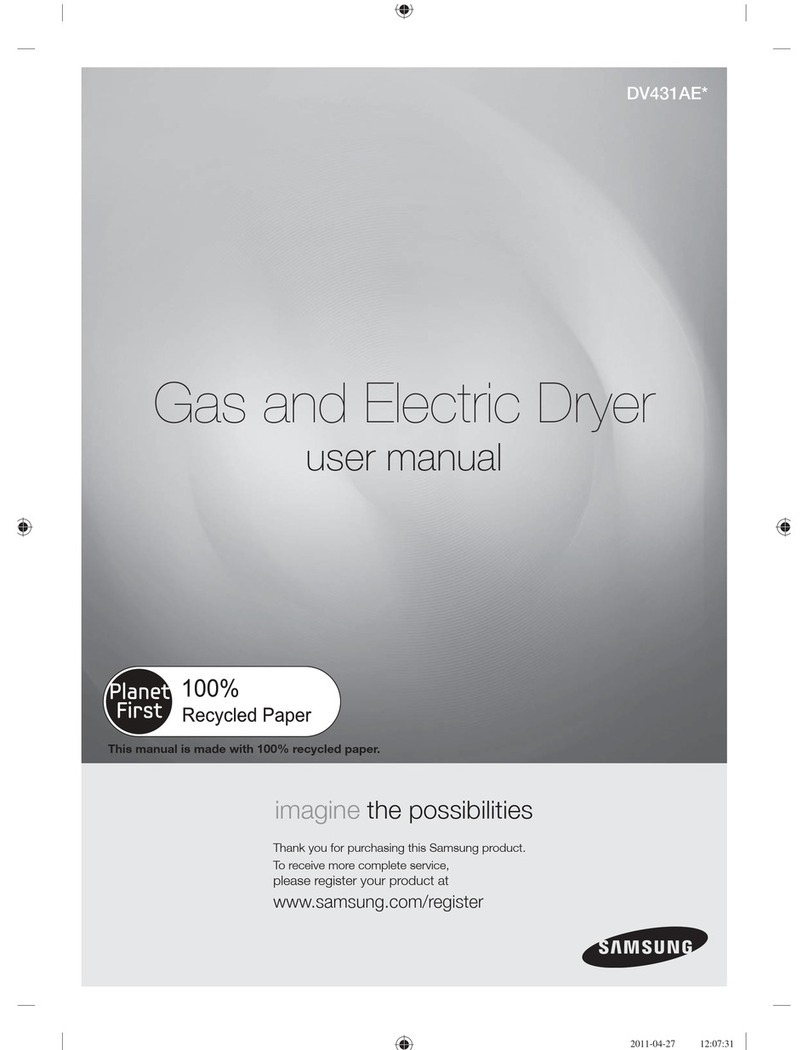
10
ELECTRIC DRYERS
ELECTRICAL REQUIREMENTS
WARNING: To help prevent re, electrical
shock, serious injury, or death, the wiring and
grounding must conform to the latest edition of
the National Electrical Code, ANSI/NFPA 70 and
all applicable local regulations. Please contact a
qualied electrician to check your home’s wiring
and fuses to ensure that your home has adequate
electrical power to operate the dryer.
• Any installation in a manufactured or mobile home must
comply with the Manufactured Home Construction and
Safety Standards Title 24 CFR, Part 32-80 or Standard
CAN/CSA0Z240 MH and local codes and ordinances.
• A 4-wire connection is required for all mobile and
manufactured home installations, as well as all new
construction after January 1, 1996. Failure to do so can
result in re, explosion, or death.
• A gas dryer must be permanently attached to the oor.
• To reduce the risk of combustion and re, the dryer must
be vented to the outside.
• DO NOT vent the dryer under a manufactured home or
mobile home.
• Electric dryers may be vented to the outside using the
back, left, right, or bottom panel.
• Gas dryers may be vented to the outside using the back,
left, or bottom panel. Gas dryers may not be vented
to the outside using the right side panel because of the
burner housing.
• The dryer exhaust duct must be axed securely to the
manufactured or mobile home structure, and the exhaust
duct must be made of a material that will resist re and
combustion. It is recommended that you use a rigid or
exible metal duct.
• DO NOT connect the dryer exhaust duct to any other
duct, vent, chimney, or other exhaust duct.
• Make sure the dryer has adequate access to outside fresh
air to ensure proper operation. The opening for outside
fresh air must be at least 25 in2 (163 cm2).
• It is important that the clearance of the duct from any
combustible construction be at least 2 inches (5 cm), and
when venting the dryer to the outdoors, the dryer can be
installed with a clearance of 1 inch (2.5 cm) at the sides
and back of the dryer.
• Please be aware that venting materials are not supplied
with the dryer. You should obtain the venting materials
necessary for proper installation.
• This dryer must be connected to a grounded metal,
permanent wiring system, or an equipment grounding
conductor must be run with the circuit conductors and
connected to the equipment grounding terminal or
lead on the dryer. Failure to do so can result in re,
explosion, or death.
• The dryer has its own terminal block that must be
connected to a separate 240 VAC, 60-Hertz, single
phase circuit, fused at 30 amperes (the circuit must be
fused on both sides of the line). ELECTRICAL SERVICE
FOR THE DRYER SHOULD BE OF THE MAXIMUM
RATE VOLTAGE LISTED ON THE NAMEPLATE. DO
NOT CONNECT DRYER TO 110-, 115-, OR 120-VOLT
CIRCUIT. Failure to follow these instructions can result in
re, explosion, or death.
• If branch circuit to dryer is 15 ft. (4.5 m) or less in
length, use UL (Underwriters Laboratories) listed No.-
10 AWG wire (copper wire only), or as required by
local codes. If over 15 ft. (4.50 m), use UL-listed No.-8
AWG wire (copper wire only), or as required by local
codes. Allow sucient slack in wiring so dryer can
be moved from its normal location when necessary.
Failure to do so can result in re, explosion, or death.
• The power cord (pigtail) connection between wall
receptacle and dryer terminal block IS NOT supplied
with the dryer. Type of pigtail and gauge of wire must
conform to local codes and with instructions on the
following pages. Failure to follow these instructions can
result in re, explosion, or death
• A 4-wire connection is required for all new
construction after January 1, 1996. A 4-wire connection
must be used where local codes do not permit
grounding through the neutral wire. Failure to do so
can result in re, explosion, or death.
Special Electrical Requirements for Mobile
or Manufactured Homes
Electrical Requirements for Electric Models Only
WARNING: To reduce the risk of re,
electric shock, or injury to persons when using this
appliance, follow basic precautions, including the
following:
WARNING: To reduce the risk of re,
electric shock, or injury to persons when using this
appliance, follow basic precautions, including the
following:
INSTALLATION INSTRUCTIONS
Kenmore(북미향건조기)111.6914#(EN).indd10 2021-06-09오전10:35:33
